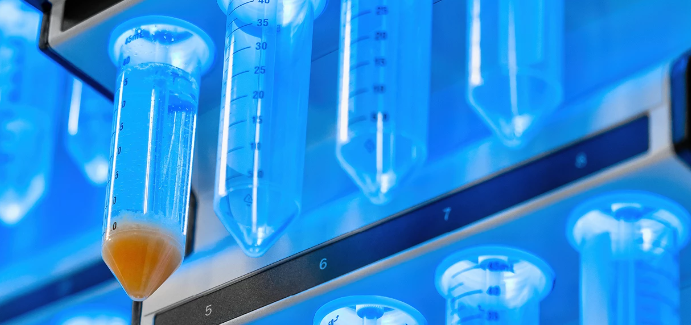The Role of Peptide Synthesis in Modern Drug Development
Peptide synthesis plays a pivotal role in the development of new therapies, especially in the realm of targeted treatments. Peptides, short chains of amino acids, offer immense potential for treating various diseases, including cancer and metabolic disorders. These molecules are beautiful due to their ability to bind precisely to specific targets. Their specificity and efficacy make peptides an attractive option for drug developers seeking precise treatment modalities. The process of custom peptide synthesis has revolutionized the way these molecules are produced, allowing for tailored solutions that meet specific therapeutic needs. This synthesis enables the creation of highly specialized peptides, which are designed to interact with biological targets in a controlled and predictable manner.
Benefits and Challenges of Peptide-Based Therapeutics
Peptide-based therapeutics come with a host of benefits. Their ability to mimic natural biological processes enables them to interact with specific receptors in the body, leading to fewer side effects compared to traditional drugs. This specificity is particularly advantageous in treatments where precision is crucial, such as in cancer therapy or metabolic disorder management. However, these benefits are accompanied by challenges. Issues such as stability, delivery, and manufacturing complexity often need to be addressed. For instance, peptides can be easily degraded by enzymes in the body, reducing their effectiveness. Addressing these challenges involves the development of advanced delivery systems and stabilization methods. Solving these challenges is crucial for the successful development and widespread adoption of peptide-based drugs.
Recent Advancements in Peptide Chemistry
Recent advancements in peptide chemistry have significantly enhanced the drug development process. Innovations in solid-phase peptide synthesis (SPPS) and liquid-phase peptide synthesis (LPPS) have improved the efficiency and yield of peptide production. These advancements have made it possible to produce complex peptides with high purity in a shorter period. Moreover, the integration of automated peptide synthesizers has boosted the precision and scalability of manufacturing processes. Automated synthesizers reduce human error and increase reproducibility, making them invaluable in the production of therapeutic peptides. These technological advancements are setting new benchmarks in the pharmaceutical industry, pushing the boundaries of what is possible in peptide drug development.
Solid-Phase Peptide Synthesis (SPPS)
The efficiency and ease of automation of solid-phase peptide synthesis (SPPS) have made it the industry standard for peptide synthesis. By using this technique, synthesis times may be significantly decreased by quickly assembling peptides from individual amino acids. High-purity complex peptide chains may be produced thanks to the process’s significant degree of adaptability. When using SPPS, the peptide chain is constructed by progressively adding protected amino acids once the first amino acid has been anchored to a stable resin substrate. The peptide undergoes purification after being separated from the resin during synthesis. Peptide production for medicinal and research purposes is made possible by this technology, which offers exact control over the peptide sequence.
Liquid-Phase Peptide Synthesis (LPPS)
Liquid-phase peptide synthesis (LPPS) offers advantages in the synthesis of larger peptide molecules. This technique is beneficial when SPPS reaches its limitations, providing an alternative that can handle longer and more complex peptide sequences. LPPS involves synthesizing the peptide in solution, which can be advantageous for certain types of peptides. This method is also beneficial for producing peptides on a larger scale, as it can be easier to purify the product. Both SPPS and LPPS have their unique benefits and are chosen based on the specific requirements of the peptide being synthesized.
Applications of Peptide Drugs
Peptide drugs are being utilized to address a variety of medical conditions. For instance, peptide-based inhibitors are used in cancer treatment to block the growth of cancer cells by binding to specific proteins involved in cell proliferation. Additionally, peptide hormones are being explored for their potential in treating diabetes and obesity. Insulin, a peptide hormone, is a well-known example used in diabetes management. Antimicrobial peptides are also in development to combat the growing issue of antibiotic resistance. These peptides can kill bacteria by disrupting their cell membranes, offering a new avenue for treating infections. The versatility and specificity of peptides make them suitable for a wide range of therapeutic applications.
Quality Control in Peptide Drug Development
It’s critical to preserve the quality of peptide medications. To guarantee the safety, effectiveness, and purity of the peptides produced, strict quality control procedures are put in place at every stage of the development process. High-performance liquid chromatography (HPLC) and mass spectrometry are two examples of sophisticated analytical methods used to track and verify the chemical characteristics of peptide molecules. To make sure the peptide is pure, HPLC is used to separate and quantify the ingredients in a mixture. Mass spectrometry confirms the authenticity and purity of the peptide by providing precise information on its molecular weight and structure. These methods are essential for fulfilling regulatory requirements and guaranteeing the finished product’s safety when used in clinical settings.
Industry Standards and Regulations
Adhering to industry standards and regulatory requirements is essential in peptide drug development. Regulatory bodies like the FDA and EMA have stringent guidelines to ensure that peptide-based therapeutics meet quality and safety standards. Compliance with these regulations is critical for obtaining approval for clinical trials and market release. The regulatory process involves rigorous testing in preclinical studies, followed by multiple phases of clinical trials in humans. This ensures that peptide drugs are both practical and safe before they reach the market. Ongoing monitoring post-approval also ensures that any adverse effects are promptly addressed, maintaining the trust and safety of patients.

